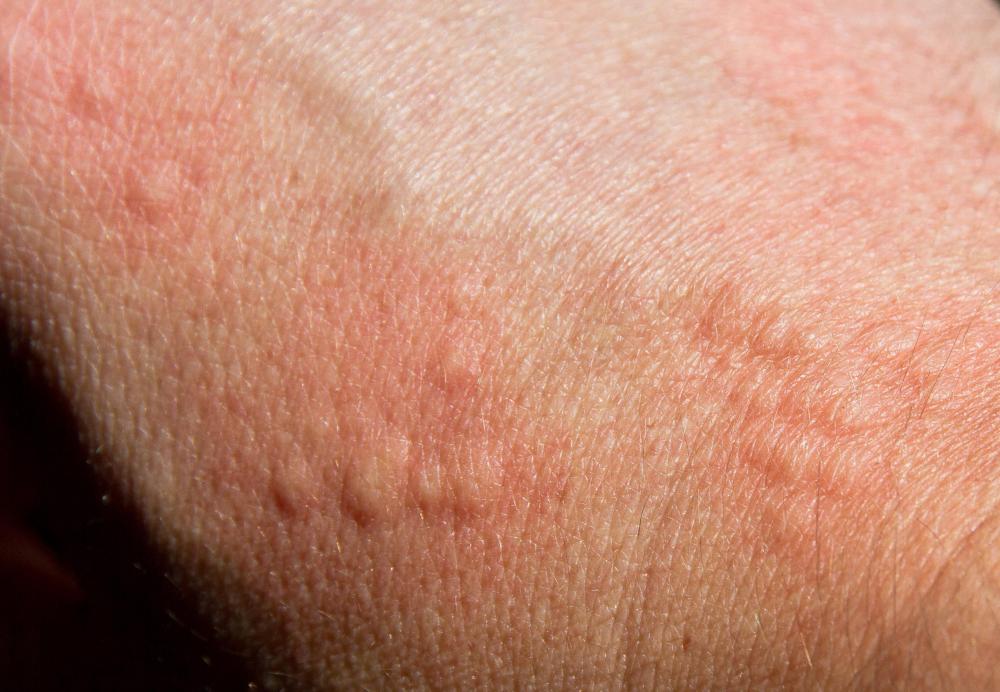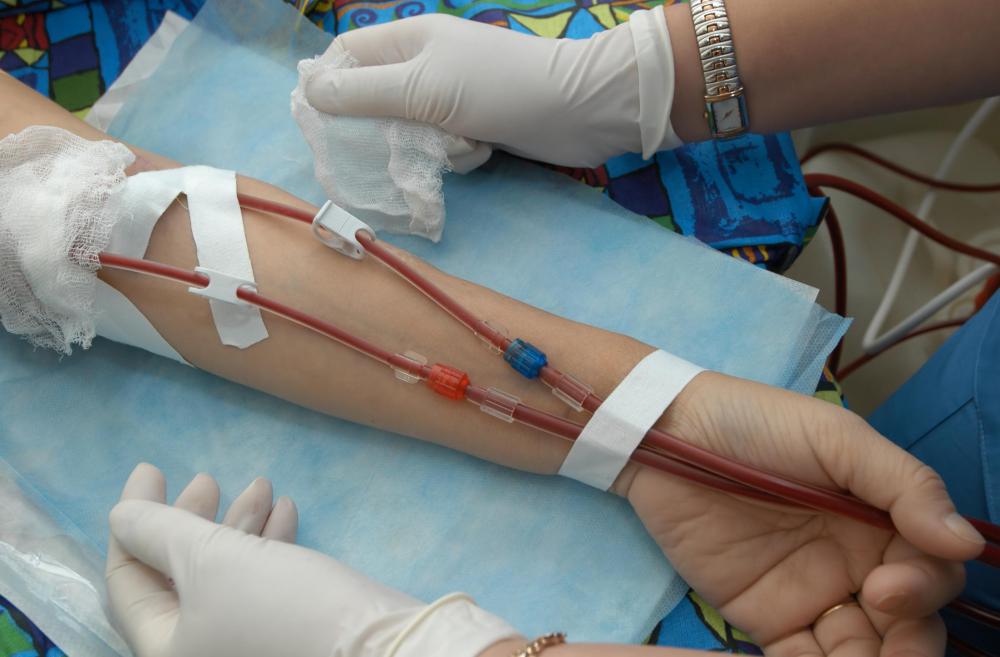At WiseGEEK, we're committed to delivering accurate, trustworthy information. Our expert-authored content is rigorously fact-checked and sourced from credible authorities. Discover how we uphold the highest standards in providing you with reliable knowledge.
What is Deferoxamine?
Deferoxamine is a medication used to remove a heavy metal from the body, specifically iron. It belongs to a group of drugs called heavy metal chelators, or heavy metal antagonists. It is often used to treat iron poisoning or to remove excess iron that can build up in patients who require frequent blood transfusions. Deferoxamine may also be used to remove aluminum.
The drug works by binding to iron in the patient's bloodstream. It can then be filtered by the kidneys and excreted. In cases of sudden iron poisoning, deferoxamine is often used in combination with other treatments. A doctor may also recommend pumping a patient's stomach or possibly inducing vomiting. When this drug is administered very soon after iron poisoning has occurred, it is usually quite effective.

Patients who are anemic may also need to remove excess iron from the body. This is because they often receive blood transfusions and may build up extra iron. Deferoxamine may also be used to treat cases of acute iron poisoning, particularly when the patient is a small child. Too much iron in the body can cause damage to tissues and organs. Sometimes the drug is also used to remove an excess buildup of aluminum in the body.

The dosage of deferoxamine used typically depends on the weight of the patient and whether the medical problem is sudden iron toxicity or long-term iron toxicity. Typically, a doctor administers the medication via injection. Occasionally, if the patient does not require hospitalization, the doctor will show the patient how to administer the injection himself. Patients who receive injections to use at home should carefully follow dosing instructions and call their doctors if they have any problems.

Deferoxamine has the potential to cause some side effects. Patients may experience convulsions, vision problems, and a blue tint to the fingernails or skin. They may also notice a rapid heartbeat, problems breathing, and hearing trouble as well as swelling or pain at the injection site. Some patients may also experience redness or flushing, or an allergic reaction such as hives or a skin rash. Patients who experience any of these side effects should contact their doctors immediately and discontinue use of the drug.

Less common side effects may also occur, such as diarrhea or problems with urination. Fever and stomach upset also are possible, as are muscle cramps or unusual bruising and bleeding. Side effects are more likely for patients who take this medication on a long-term basis or in those taking high dosages.
Before using this deferoxamine, patients should disclose all previous medical conditions and medications to their doctor. For example, kidney disease may preclude a patient from using this medication. Patients should carefully follow all instructions from their doctor, which may include making appointments for follow-up visits and urine tests. The supplementation of vitamin C in combination with this drug should be avoided.
AS FEATURED ON:
AS FEATURED ON:















Discuss this Article
Post your comments